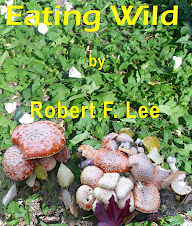This year, on the July long weekend, I took a walk along
Highway 317 in Manitoba. It is a relatively barren route, on a sand hill formed
by the old Lake Agassiz’s retreat. Nearby is the Libau bog, and the area is
primarily a pine forest. Yet, in the first mile, I found so many edible plants
on that national holiday that I could have eaten for weeks with ample
nutrition.
To start with, the various wild grasses and grains are
already forming their seeds, providing a starch and flour base. Awned
wheatgrass grows here, and also can be eaten.
The edge of the highway is adorned with both yellow and
white sweet clover flowers. The flowers, young shoots and leaves are all
edible, and many people eat the roots. However, if the clover has become mouldy
due to excess moisture after cutting, coumarin forms. This can be toxic in
large doses, and livestock have died from eating rotted clover. Purple clover
flowers make a great tea, and can be dried for winter use.
Much like the purple clover, volunteer alfalfa grows along the
ditches. Although it is not truly a wild plant, it has spread from farmer’s
trucks hauling seed along 317.
Of course, the pine forest can be part of the main course,
too. Pine needles and seeds are edible (although the seeds arrive much later).
A few diehards eat the buds that form and fall in May & June. These little
rust-coloured buds look too much like the pine beetles that infest the area for
my liking.
Both yellow and pink lady slippers are abundant. Like the
Western Red Lily (Tiger lily), the roots and flowers are edible, but they are
much too attractive to destroy! On the
other hand, many reports suggest that the bluebell is poisonous, although no
fatalities have been reported.
As I walked along, I stopped often to snack on the tiny
alpine strawberries that are so abundant in these wastelands.
For spices, prairie sage (looking very much like tame sage)
and wild bergamot are abundant. An odd
plant, goatsbeard produces a relatively small yellow flower like the dandelion,
but a massive feathery seed ball, five to ten times the size of a dandelion. This
plant, too, is edible (the root).
Goldenrod is just coming into bloom. This plant has many
uses, as does dandelion. A noxious weed, tansy is invading the province but, in
moderation, can be eaten.
Horsetail, with its high silica content, is a great
medicinal plant, but far too gritty to enjoy as an edible. On the other hand,
take a lesson from cattle and horses, and don’t even think about eating
foxtail. Its feathery fronds tear at stomach linings and can cause severe
bleeding.
Other flowers, like the hairy puccoon and large leaf aster,
also are used in culinary preparations, but one of the most versatile is the
cattail. Its root is a potato, a thickener, a vegetable. Its young shoots are
asparagus or boiled greens while its fluffy seed pod has been used as a base on
which to sleep.
Many of the plants have both medicinal and culinary uses.
Few are harmful. I guess these native plants are just like Manitoba residents:
sometimes bland, almost always good for you and very rarely noxious!






























